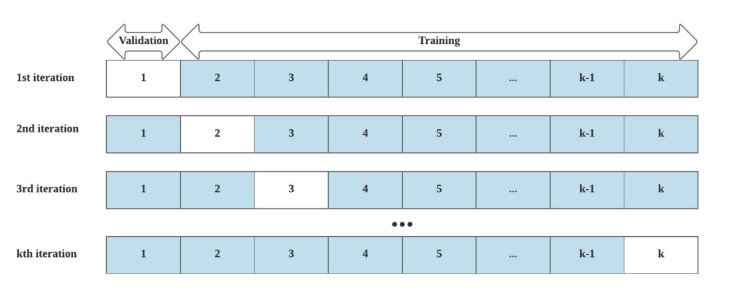This article, “Mastering Machine Learning with Microsoft Azure Machine Learning Studio,” serves as a comprehensive guide to leveraging Microsoft Azure’s powerful tools for machine learning (ML) enthusiasts. Beginning with an introduction to ML concepts, it swiftly progresses to explore the functionalities and interface of Azure Machine Learning Studio. Readers are guided through practical steps, from setting up their environment to preprocessing data and engineering features essential for effective ML models. The article also covers the crucial stages of model building and training, equipping readers with the skills to harness Azure’s capabilities for developing robust ML solutions. Whether new to ML or aiming to expand expertise using Azure, this guide provides valuable insights and practical knowledge.
Come along with poqzp.xyz to delve into this subject in detail.
1. Introduction to Machine Learning
Machine learning (ML) is a transformative field within artificial intelligence that empowers systems to learn from data and make decisions or predictions autonomously. Its applications span various domains, from predictive analytics in finance to image recognition in healthcare. Understanding the fundamental principles of ML is crucial for effectively utilizing tools like Microsoft Azure Machine Learning Studio.
ML algorithms enable computers to recognize patterns within data and make informed decisions based on examples or historical data. This article aims to demystify ML by providing a foundational understanding before delving into practical implementation using Azure Machine Learning Studio. By grasping concepts such as supervised and unsupervised learning, readers will be prepared to explore how Azure’s platform simplifies the complexities of ML development.
Moreover, mastering ML involves knowing how to preprocess data to ensure it’s clean and relevant, which significantly impacts model accuracy. Through Azure Machine Learning Studio, this article will guide readers in leveraging sophisticated tools for data preprocessing, model building, and training. Whether you’re a novice or looking to enhance your skills, this introduction sets the stage for a comprehensive journey into mastering ML with Azure.
2. Overview of Microsoft Azure Machine Learning Studio
Microsoft Azure Machine Learning Studio provides a robust platform for building, deploying, and managing machine learning models on the cloud. It offers a user-friendly interface that caters to both beginners and seasoned data scientists, facilitating the entire ML lifecycle from data preparation to model deployment.
At its core, Azure Machine Learning Studio integrates seamlessly with other Azure services, allowing easy access to diverse datasets and computational resources. This integration simplifies the process of scaling ML experiments and deploying models into production environments. The platform supports various programming languages, including Python and R, enabling flexibility in model development and experimentation.
Key features of Azure Machine Learning Studio include drag-and-drop capabilities for constructing ML pipelines, which streamline workflow and reduce coding overhead. Additionally, its automated machine learning (AutoML) functionality empowers users to quickly identify the most effective algorithms and model parameters for their specific datasets.
For data scientists, Azure Machine Learning Studio offers a range of tools for data visualization, statistical analysis, and performance evaluation. These tools not only enhance productivity but also enable rigorous testing and validation of ML models before deployment.
Overall, Azure Machine Learning Studio is designed to accelerate ML development and deployment, making complex tasks more accessible and empowering users to focus on deriving insights and creating impactful solutions from their data. This section will explore its interface and functionalities in detail, preparing readers to harness its capabilities effectively in their ML projects.

3. Getting Started with Azure Machine Learning Studio
To begin using Azure Machine Learning Studio, start by creating an Azure account if you haven’t already. Once logged in, navigate to the Azure portal and locate the Machine Learning service. From there, you can launch Azure Machine Learning Studio, which provides a user-friendly interface for managing your ML projects.
The first step involves setting up a workspace within Azure Machine Learning Studio. This workspace acts as a central hub where you can organize datasets, experiments, and trained models. Next, familiarize yourself with the studio’s tools, including its drag-and-drop interface for building ML pipelines and its integration with popular programming languages like Python and R.
Azure Machine Learning Studio also supports collaborative work environments, allowing multiple team members to contribute to projects simultaneously. By following these initial steps, you’ll be equipped to explore the platform’s capabilities further, preparing to dive into data preprocessing, model development, and the deployment of machine learning solutions on Azure.

4. Data Preprocessing and Feature Engineering
Data preprocessing and feature engineering are essential steps in preparing datasets for machine learning models within Azure Machine Learning Studio. Preprocessing involves cleaning data to remove noise, handling missing values, and standardizing numerical features. Azure Machine Learning Studio provides built-in modules for these tasks, streamlining the process with visual tools that allow for easy configuration and execution.
Feature engineering focuses on creating new input features from existing data to improve model performance. This can include transforming variables, creating interaction terms, or extracting useful patterns from raw data. Azure Machine Learning Studio supports feature engineering through various transformation modules, enabling users to manipulate data efficiently.
Moreover, the platform offers options for feature selection, helping data scientists identify the most relevant features for model training. This step is crucial for optimizing model performance and reducing overfitting.
By leveraging Azure Machine Learning Studio’s capabilities in data preprocessing and feature engineering, users can enhance the quality of their datasets and improve the accuracy and robustness of their machine learning models deployed on Azure. This section will delve into practical examples and best practices for effective data preparation using the studio’s tools and functionalities.

5. Building and Training Machine Learning Models

Building and training machine learning models in Azure Machine Learning Studio is a structured process that begins with selecting appropriate algorithms and configuring model parameters. The platform offers a diverse range of algorithms, from traditional methods like linear regression and decision trees to advanced techniques such as deep learning and ensemble methods. Users can explore and compare these algorithms using Azure’s automated machine learning (AutoML) capabilities, which identify optimal models based on specified performance metrics.
Once algorithms are selected, data scientists can leverage Azure Machine Learning Studio’s experiment tracking and versioning features to monitor model performance across iterations. This includes evaluating metrics such as accuracy, precision, and recall to ensure the model meets desired objectives.
Moreover, Azure Machine Learning Studio supports distributed training, allowing models to be trained on large datasets across multiple compute resources efficiently. This scalability is crucial for handling complex ML tasks and achieving faster training times.
By following best practices and utilizing Azure Machine Learning Studio’s comprehensive tools, data scientists can effectively build, refine, and deploy machine learning models on Azure, empowering them to derive valuable insights and solutions from their data.
In conclusion, mastering machine learning with Microsoft Azure Machine Learning Studio equips users with robust tools for every stage of the ML lifecycle. From data preprocessing to model deployment, Azure simplifies complex tasks, making advanced ML techniques accessible. Embrace Azure Machine Learning Studio to innovate, optimize, and deploy impactful solutions in diverse domains.
poqzp.xyz
